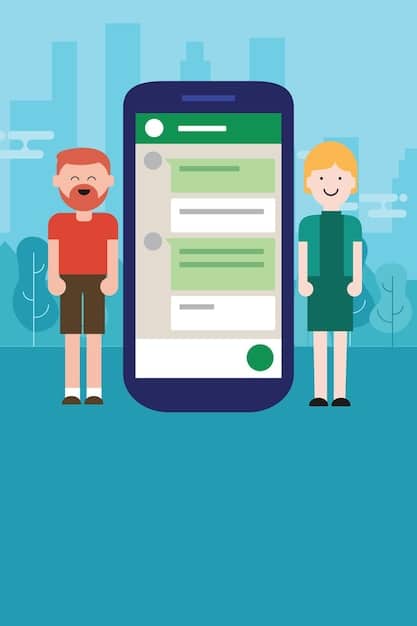Mobile-First Customer Service: Are Your Channels Ready?

Customer service channels must adapt to meet the demands of the mobile-first generation. Mobile channels that are efficient, customer-centric and personalized are crucial for businesses looking to thrive in today’s market.
In today’s digital landscape, the mobile-first generation expects seamless and convenient customer service experiences. Is your business equipped to deliver that? This article explores how to ensure your customer service channels are ready for the mobile-first generation.
Understanding the Mobile-First Generation
The mobile-first generation, primarily consisting of millennials and Gen Z, have grown up with mobile devices as their primary tool for communication, entertainment, and commerce. Understanding their preferences and behaviors is crucial to crafting effective customer service strategies.
Mobile-First Mindset
This generation prioritizes convenience, speed, and personalization. They expect instant access to information and solutions through their mobile devices.
Digital Natives
Having grown up with smartphones and tablets, they are highly comfortable navigating various digital platforms and expect seamless experiences across all channels.
- 📱 Convenience is key: They seek quick solutions without having to make phone calls or visit physical locations.
- ⚡ Speed and efficiency: They demand instant responses and resolutions to their queries.
- 🤝 Personalization matters: They appreciate tailored experiences that cater to their specific needs and preferences.
Understanding these key characteristics will help businesses tailor their customer service channels to meet the expectations of this tech-savvy demographic. This involves optimizing mobile platforms and prioritizing digital channels to deliver a satisfactory user experience.
Optimizing Your Website for Mobile Customer Service
Your website is often the first point of contact for customers seeking assistance. Optimizing it for mobile devices is essential to provide a positive customer service experience. A mobile-friendly website ensures that users can easily find the information and support they need, regardless of the device they are using.
Responsive Design
Ensure your website uses a responsive design that adapts seamlessly to different screen sizes and resolutions.
Mobile-Friendly Navigation
Simplify navigation menus to make it easy for mobile users to find the information they need.

- 🔎 Easy-to-find contact information: Make sure your phone number, email address, and live chat options are prominently displayed.
- 🖱️ Streamlined forms: Simplify forms for easy completion on mobile devices with fewer fields.
- ⏱️ Fast loading times: Optimize images and code to ensure quick loading times, as mobile users have less patience for slow websites.
By implementing these optimizations, you can improve the mobile customer service experience and increase user satisfaction. A well-optimized website enhances accessibility and provides a seamless platform for customers to resolve their issues quickly and efficiently.
Leveraging Social Media for Mobile Support
Social media platforms have become powerful tools for providing customer support. Many customers now turn to social media to voice their concerns, seek assistance, and engage with brands. Businesses can leverage these platforms to deliver timely and effective customer service, meeting customers where they are most active.
Active Monitoring
Monitor social media channels for mentions of your brand, products, or services.
Prompt Responses
Respond to customer inquiries and complaints promptly, demonstrating that you value their concerns.
Social media also serves as a public forum where others can witness how well a company handles interactions. This makes it imperative for businesses to maintain professionalism and efficiency in all their social media customer service dealings.
- 💬 Direct messaging: Offer support through direct messaging for private and personalized assistance.
- 📣 Public engagement: Address common issues and questions publicly to benefit all followers.
- 👂 Feedback collection: Use social media to gather feedback and insights to improve your products and services.
Effectively utilizing social media for customer support not only resolves individual issues but also builds brand loyalty and enhances your online reputation. Engaging on social platforms humanizes the brand, presenting a more relatable and responsive image to consumers.
Implementing Live Chat and Messaging Apps
Live chat and messaging apps provide real-time assistance, making them ideal channels for mobile customer service. These tools offer a convenient and efficient way for customers to get immediate support, enhancing their overall experience. Integrating live chat into a website or using messaging apps ensures that help is always just a tap away.
Real-Time Support
Offer instant assistance through live chat to address urgent inquiries and issues.
Personalized Interactions
Use chat history to provide personalized and relevant support based on past interactions.

- 💬 24/7 availability: Consider offering around-the-clock support through chatbots or a dedicated team.
- 🌐 Seamless integration: Ensure live chat integrates smoothly with your website and other communication channels.
- 🗣️ Proactive support: Use chat to proactively offer assistance to visitors on key pages of your website.
Implementing these tools enhances customer satisfaction by providing immediate solutions and personalized service. Live chat and messaging apps not only resolve issues quickly but also help to gather critical feedback that can be used to refine products and services and enhance operational efficiency.
The Role of Mobile-Friendly Email Support
While newer communication channels have emerged, email remains a vital component of mobile customer service. It provides a documented record of interactions and is suitable for handling more complex issues that require detailed explanations. Optimizing email support for mobile devices ensures that customers can easily read, respond to, and manage their communications on the go.
Mobile-Responsive Emails
Use a mobile-responsive design to ensure emails are easy to read on smartphones and tablets.
Clear and Concise Communication
Keep emails short, focused, and easy to understand, avoiding overly technical jargon.
Mobile-friendly email support helps to resolve issues where more detailed instruction or documentation may be required. It provides an essential channel for maintaining consistent communication with customers and ensuring their needs are thoroughly addressed.
- ✉️ Fast response times: Aim to respond to emails promptly, ideally within one business day.
- 🔗 Easy access to attachments: Ensure attachments are easily accessible on mobile devices.
- 📝 Personalized greetings and sign-offs: Use personalized greetings and sign-offs to add a personal touch to your emails.
By optimizing email support for mobile, businesses can ensure that they continue to provide effective and satisfactory service, even as communication preferences evolve. It is a reliable channel that complements real-time and social media interactions, providing a well-rounded approach to customer support.
Personalization and the Mobile Experience
Personalization is a key aspect of exceptional customer service, particularly for the mobile-first generation. Tailoring the customer experience to individual preferences not only increases satisfaction but also fosters loyalty. Understanding and leveraging data to provide personalized interactions can set your business apart in a competitive landscape.
Data-Driven Personalization
Use data to understand customer preferences and behavior to deliver personalized experiences.
Tailored Content
Provide content and recommendations that are relevant to each customer’s interests and needs.
Personalization in the mobile experience increases engagement and builds stronger relationships with customers. Tailoring content and interactions to individual needs ensures that customers feel valued and understood, which in turn drives brand loyalty.
- 🎉 Personalized offers and promotions: Provide exclusive deals and recommendations based on past purchases.
- ⭐ Customized support interactions: Use customer data to address issues more effectively and efficiently.
- 💖 Proactive recommendations: Offer assistance or suggestions based on user behavior or preferences.
By focusing on personalization, businesses can transform their mobile customer service from a transactional interaction to a meaningful engagement, fostering long-term relationships and driving business growth.
Measuring Success and Continuous Improvement
Measuring the success of your mobile customer service efforts is crucial for identifying areas of improvement and ensuring ongoing optimization. Utilizing key performance indicators (KPIs) and feedback mechanisms allows businesses to track progress, refine strategies, and deliver consistently excellent service. Continuous improvement ensures that your customer service remains effective and relevant in a constantly evolving digital landscape.
Key Performance Indicators (KPIs)
Track metrics such as response times, resolution rates, and customer satisfaction scores.
Feedback Mechanisms
Implement feedback surveys and solicit customer reviews to understand their experiences and identify areas for improvement.
Regular monitoring and analysis of these metrics can also assist businesses in making data-driven decisions. This ensures that improvements are targeted and effective, enhancing not just the customer experience but also operational efficiency.
- 📊 Regular analysis of data: Use analytics to identify trends and patterns in customer behavior.
- 🔄 A/B testing: Experiment with different strategies to optimize your customer service channels.
- 🏆 Benchmarking: Compare your performance against industry standards to identify areas for improvement.
By focusing on continuous improvement and adapting to changing customer needs, businesses can ensure that they continue to provide exceptional mobile customer service that drives both satisfaction and loyalty.
| Key Takeaway | Brief Description |
|---|---|
| 📱 Mobile Optimization | Ensure your website and channels are mobile-friendly for seamless access. |
| 💬 Social Media Support | Use social platforms for active and prompt customer issue resolution. |
| ⚡ Live Chat & Messaging | Employ real-time support for instant assistance and personalized experiences. |
| 💖 Personalization | Tailor experiences with data to enhance satisfaction and build lasting loyalty. |
[FAQ]
FAQs
▼
Mobile customer service is crucial because the mobile-first generation expects immediate support on their devices. Businesses that fail to provide this risk losing customers to competitors.
▼
Use responsive design, simplify navigation, and ensure fast loading times. Make contact information easily accessible and streamline forms for easy completion on mobile devices.
▼
Social media allows businesses to monitor brand mentions, respond to customer queries promptly, and engage with customers where they are most active, enhancing overall satisfaction and loyalty.
▼
These tools provide real-time assistance, allowing customers to quickly resolve urgent issues. They enable personalized interactions and can be available 24/7, enhancing the customer experience.
▼
Personalization tailors the customer experience to individual preferences, increasing satisfaction and fostering loyalty. It involves using data to provide relevant content, offers, and support interactions.
Conclusion
Ensuring your customer service channels are ready for the mobile-first generation involves optimizing websites, leveraging social media, implementing live chat, and prioritizing personalization. By focusing on these key areas, businesses can meet customer expectations, build loyalty, and drive success in today’s digital landscape.





